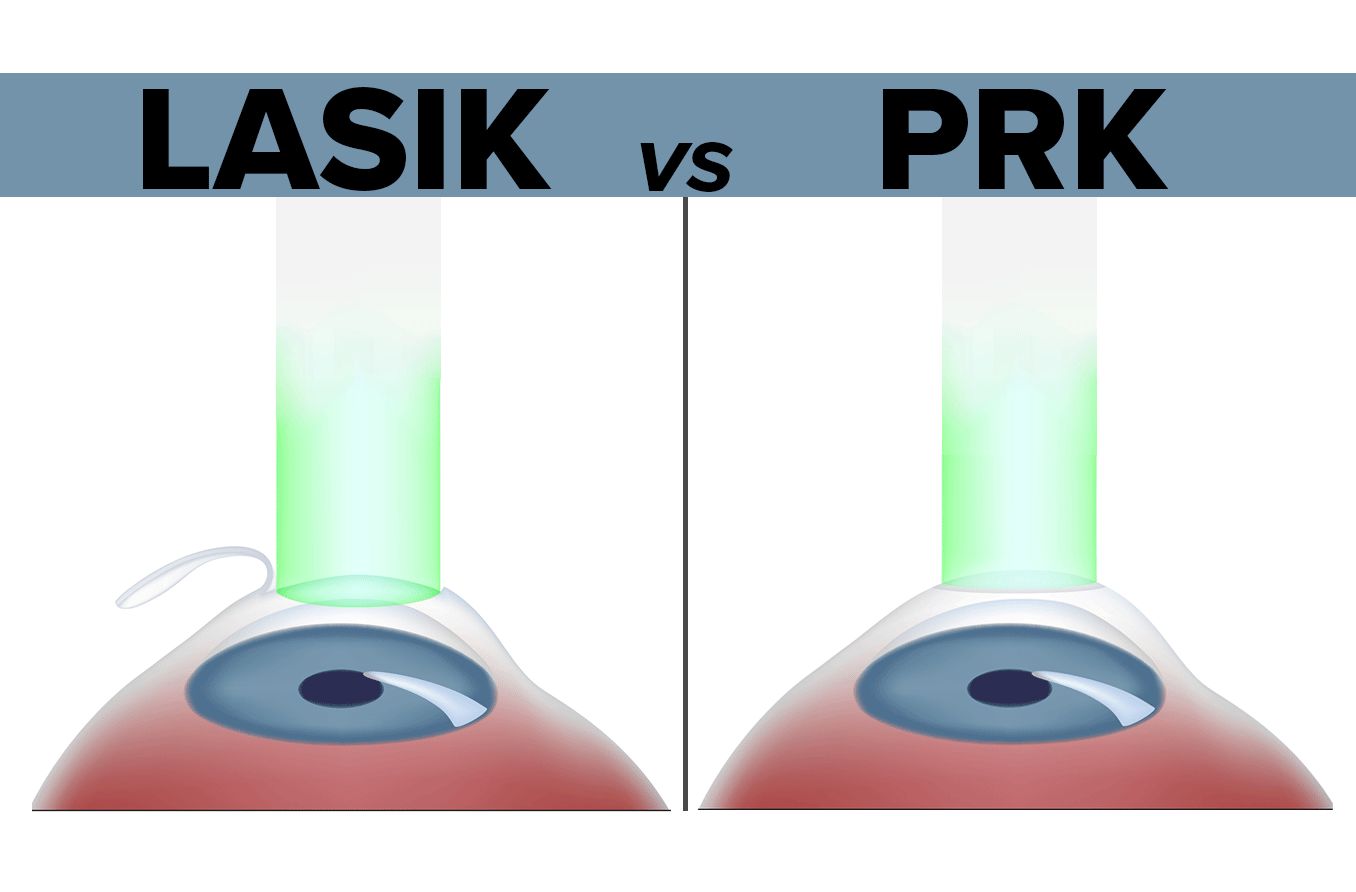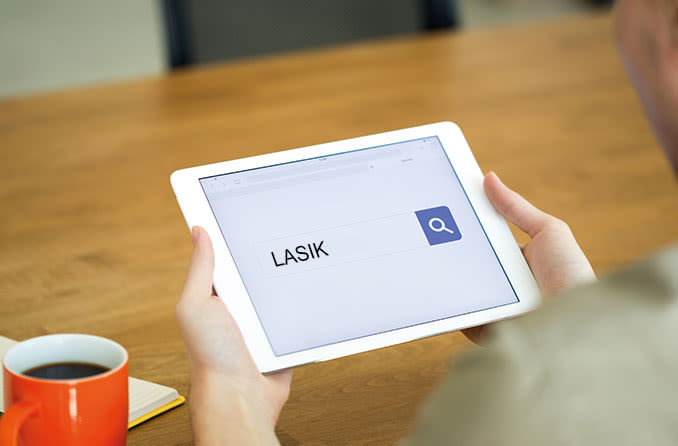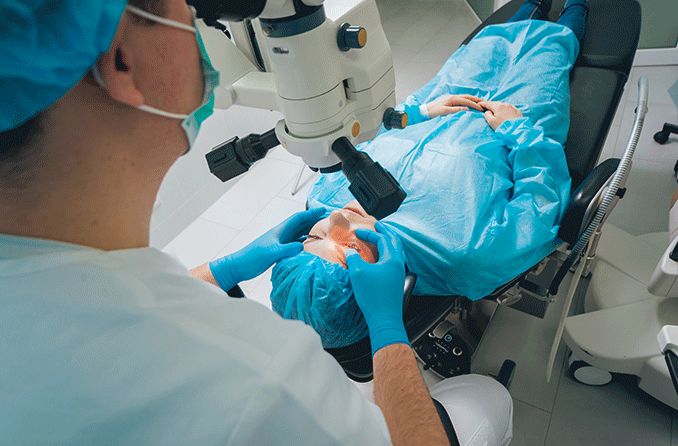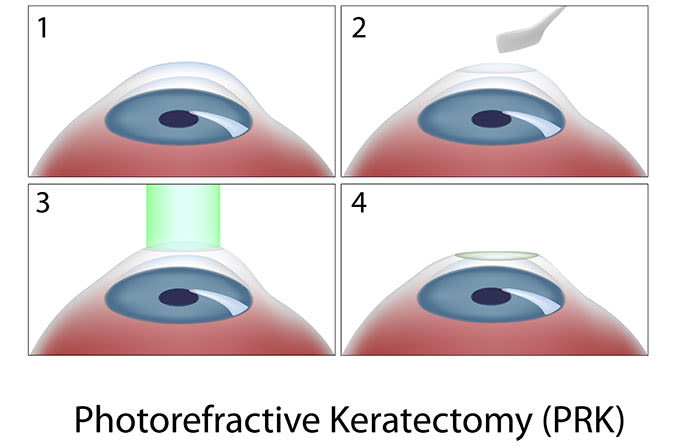PRK vs. LASIK eye surgery cost
If you’re looking to get rid of contact lenses or glasses, you may be weighing the pros and cons of PRK vs. LASIK to decide which type of laser eye surgery would work best for you. Both surgeries correct refractive errors such as astigmatism, nearsightedness (myopia) and farsightedness (hyperopia).
Monovision is an option for people with presbyopia, a condition that often affects people over 40. It makes it tough to see close-up for tasks like reading. With monovision, one eye is corrected for distance vision and the other for near vision.
The costs involved with these two procedures are fairly similar. However, they vary slightly based on geographic location and facility.
In 2025, the estimated cost of PRK surgery was about $2,250 to $2,500 per eye or $4,500 to $5,000 for both eyes. The same was generally true for LASIK.
Contact the eye surgery centers you’re considering and ask about pricing to get accurate cost information for laser eye surgery near you. You may also be able to get financing for LASIK or PRK surgery.
This guide covers how PRK (photorefractive keratectomy) compares to LASIK (laser-assisted in situ keratomileusis) in terms of:
- Cost
- Surgical technique
- Recovery time
- Pain
- Complications
- Side effects
It also compares PRK vs. LASIK for military, law enforcement and other professions that may require excellent vision.
PRK vs. LASIK: Surgical techniques
Both PRK and LASIK are outpatient procedures that involve spending about an hour at the eye surgery center. For both procedures, the surgeon will put anesthetic eye drops in your eye and use an eye speculum to hold your eyelids open during surgery.
There are some differences as well. Here’s a contrast of PRK vs. LASIK in terms of surgical technique:
- LASIK involves creating a flap while PRK does not. In LASIK, the doctor uses the laser to create a flap in the cornea to access and reshape the cornea to correct your vision. The surgeon places the flap back in place to heal.
- PRK involves removing the outer layer of the cornea while LASIK does not. In PRK, the surgeon removes the outer layer (epithelium) to reshape the cornea. The outer layer of the cornea grows back after surgery. The surgeon inserts a soft contact lens to act as a bandage during healing.
In recent years, the availability of a modified PRK, transepithelial-PRK, has increased. This technique uses a single laser to perform both the removal of the outer corneal layer and the reshaping of the cornea.
Both types of surgery require you to have someone drive you home because you will not be able to see clearly immediately afterward.
PRK vs. LASIK: Recovery and healing time
LASIK typically has a much shorter recovery time than PRK. The initial recovery time for PRK lasts about two to three days, while with LASIK you can typically go back to work the next day.
There is little to no pain during recovery with LASIK, while about 10% of PRK patients may experience “mild to moderate” pain or discomfort in the 24 to 36 hours after surgery. This pain may be managed with eye drops and oral pain relievers.
The length of time it takes to attain clear vision after surgery is much longer with PRK than with LASIK. It can take about a month to see clearly after PRK, while LASIK patients may be able to see clearly within a few hours to a few days. Most people have LASIK and PRK surgery on both eyes in the same surgery session.
Are you a candidate for PRK or LASIK?
You generally need to be at least 18 to 21 years old and have healthy eyes and stable vision to be a candidate for PRK or LASIK. Patients with conditions such as glaucoma, cataracts or severe dry eyes might not be candidates for laser eye surgery. This may also not be a good option if you have diabetes.
These are the general characteristics of candidates for PRK vs. LASIK:
- Candidates for PRK – Have a thinner or irregular cornea or lead an active lifestyle
- Candidates for LASIK – Have an adequately thick cornea and prefer less downtime
Your corneal thickness may determine whether you’re a candidate for laser eye surgery and which type of surgery you can get.
If you have severe nearsightedness or dry eye issues, SMILE eye surgery (small incision lenticule extraction) may be recommended over LASIK or PRK. This surgery uses a small incision and a laser to remove a small lenticule from the cornea.
PRK vs. LASIK: Risks, complications and side effects
Both PRK and LASIK are considered safe and effective methods of laser vision correction. But, like all surgeries, they come with potential risks, side effects and complications. Side effects after laser eye surgery are usually temporary. These may include:
- Dry eyes
- Fluctuating or blurry vision
- Light sensitivity
- Clouding or scarring of the cornea
- Glare and halos
- Poor night vision
Complications are not common. If they do occur, they are usually related to the flap created during LASIK. PRK and transepithelial-PRK may be recommended as safer choices for patients at risk of complications from the LASIK flap. Rarely, infection, worsened vision or blindness can occur.
It is also possible that the surgery does not fully correct your vision. An enhancement surgery may be needed a few months to a few years after laser eye surgery.
PRK vs. LASIK: Outcomes
PRK and LASIK both have similarly positive outcomes. Studies have not found any difference between PRK and LASIK in long-term outcomes in patients with low to moderate nearsightedness. Little research has been done to determine if PRK or LASIK is better for patients with farsightedness.
One difference is that after healing with LASIK, a flap still remains on the cornea. This means there is always a risk that blunt trauma could dislodge the corneal flap in the future. In the rare cases where that happens, the patient may need surgery to reposition the flap.
In contrast, an eye that has healed from PRK goes back to the way it was before surgery. For this reason, some surgeons recommend PRK for people with very active lifestyles or professions such as law enforcement.
PRK or LASIK for military, pilots and law enforcement
People in certain career fields may need good eyesight to perform some of their job duties. For example, some roles in the military and law enforcement have special vision requirements. These should be considered when deciding which type of laser vision correction to get.
PRK vs. LASIK for military
Laser eye correction is popular in the military because clear vision is key, and glasses and contact lenses may hinder job performance in certain scenarios. PRK is the most popular laser eye surgery for military members due to concerns that job-related trauma after LASIK could cause flap dislocation.
But LASIK does have advantages over PRK for military members, including faster recovery time and the ability to return to work more quickly. Military members may be able to get back to full duty in six weeks with LASIK vs. three months with PRK. For that reason, both LASIK and SMILE laser eye surgery are becoming more common among members of the military.
SMILE laser eye surgery may be a good option for military members because there is no flap to get displaced, and recovery time is similar to LASIK.
Before getting laser eye surgery, military members may want to check if corrective eye surgery could make them ineligible for a particular role in a certain military branch.
PRK vs. LASIK for pilots
LASIK has a few advantages for pilots over PRK, including minimal “central haziness” and the ability to get to 20/20 vision more quickly, according to the Aviation Medicine Advisory Service. Pilots should carefully consider any possible downsides to laser eye surgery, including possible worsening of night vision.
PRK vs. LASIK for law enforcement
Despite the longer recovery time, PRK may be a better option than LASIK for those in law enforcement due to the risk of the LASIK flap getting dislodged during training or physical contact on the job.
There is also a risk that pepper spray could get under the corneal flap and cause irritation. Police officers who get LASIK may need to wear eye protection at times to minimize these risks.
LASEK (laser epithelial keratomileusis) may be another good option for people in law enforcement.
Note: People in aviation, military and law enforcement careers should be aware that laser eye surgery may not be able to correct their vision to the required standards of their profession. If you’re in one of these fields, this is an important topic to discuss with your eye surgeon.
The bottom line: Pros and cons of PRK vs. LASIK
So, which is better, PRK or LASIK? It really all depends on the individual person. In summary, advantages of LASIK over PRK may include:
- Ability to resume normal activities quickly
- Little to no pain after surgery
- Quicker results
The advantages of PRK over LASIK may include:
- Slightly lower cost
- Works better for some patients (active lifestyles, over 40, thinner corneas, higher prescriptions, certain professions)
- There is no flap that could get dislodged in the future
However, the decision on whether to get PRK or LASIK will depend on your individual situation. Your eye doctor or eye surgeon will need to do a comprehensive eye exam and check your corneas to determine if you are a better candidate for PRK or LASIK. If you’re a candidate for both procedures, your eye doctor will discuss factors to weigh when making your decision.
If you’re ready to take the next step and set up a consultation, it’s time to choose an eye surgeon and schedule a visit.











